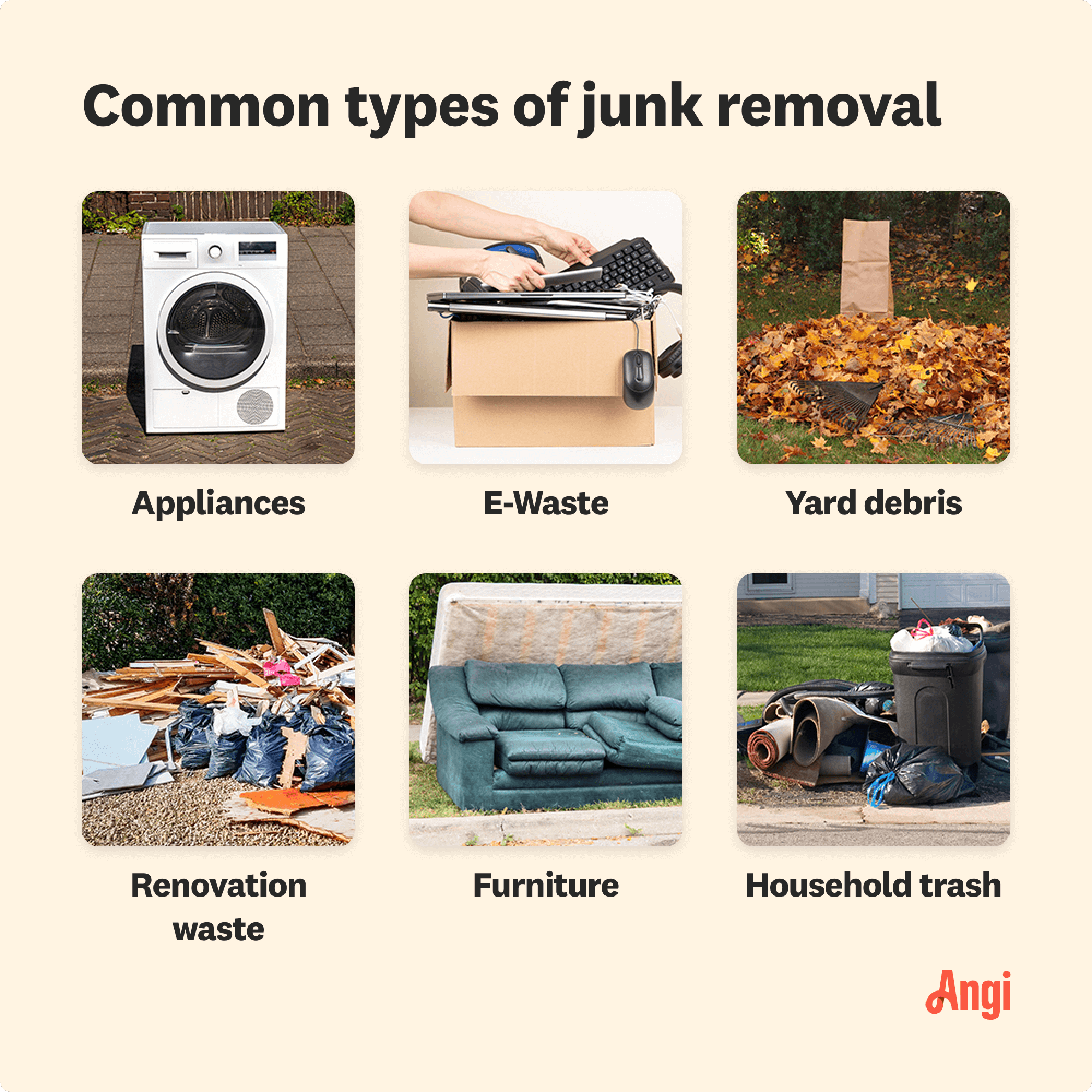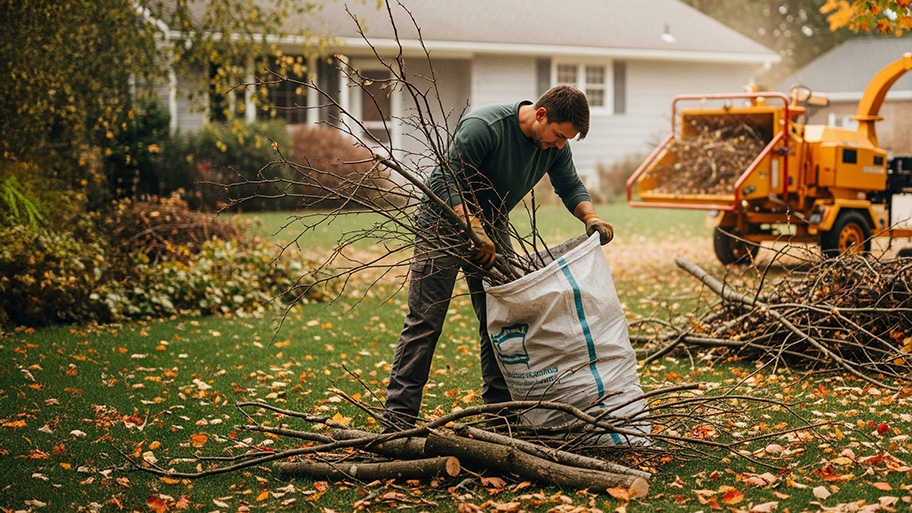
Factors like size, accessibility, and soil test results for oil leaks will determine the total cost of removing your oil tank.
Disposing of a fire extinguisher improperly can land you in hot water


No home should be without fire extinguishers, but when these must-haves get damaged or expire, and you can’t just throw them in with the rest of your trash when you replace them. Fire extinguishers contain hazardous materials under extreme pressure, so they need special handling when it’s time to get rid of them.
Use this guide to learn your options for how to safely and responsibly dispose of a fire extinguisher.
You want to dispose of a fire extinguisher if it’s damaged or expired, similar to disposing of light bulbs. The average lifespan of a fire extinguisher is anywhere from 10 to 12 years, assuming you’ve used proper care and maintenance. Some models last even longer than 12 years but with reduced efficacy. Basically, if your extinguisher is past its best-by date or you notice obvious signs of damage, it’s disposal time.
There are a few methods to safely and efficiently dispose of a damaged or expired fire extinguisher. Check out your options.

Start your mission by contacting the pro fire extinguishers: the local fire department. Some fire stations allow residents to simply drop off expired, damaged, or unusable fire extinguishers. They will properly dispose of the chemicals inside the canister and recycle the remaining components. Not every station offers this service, so call ahead of time.
Another option is to contact a local hazardous waste disposal facility. Not only are these places equipped to handle the materials inside of a standard fire extinguisher, but they will also recycle the remaining components. If you aren’t sure how to find one of these facilities, perform a quick web search or peruse your local government’s website. Once you find a location close by, give them a call to confirm they accept fire extinguishers. Some facilities only accept extinguishers on certain days.
Contact a local junk removal pro and inquire about its policies regarding fire extinguishers. Many of these companies are well-equipped to accept and dispose of these tools, and they’ll even come and pick it up for you. However, this service isn’t a budget-friendly option if all they’re picking up is your old extinguisher. Junk removal costs anywhere from $60 to $600, so you may wish to wait until you have several things for them to pick up, like old furniture.
It’s not advised to place hazardous waste materials in your dumpster without first consulting your dumpster rental company. If these items make their way to the landfill, they (in most circumstances) will be returned to you, and you will face a fine of up to $500.
If your extinguisher is empty, take it to a local recycling center and ask them to dispose of the canister and related components. This is a common practice, but we must caution that the canister has to be empty, or they won’t take it unless they also regularly handle hazardous waste.
In some instances, you can leave a fire extinguisher out for the garbage crew to pick up as part of your local recycling program. Again, the canister has to be completely empty. You should also call your local government agency to inquire if recycling will pick up empty extinguishers, as some cities won’t do it even when empty.
You should check the condition of your fire extinguisher every once in a while to make sure it’ll be up to snuff should an emergency occur. Here’s what you should look out for as you inspect your tools for damage.6
Damaged outer shell. A damaged exterior could mean you have a leak, or it may cause the tool to be inoperable. Replace the unit if you notice any cracks on the exterior.
Missing inspection tag. Unlike your mattress, the tag here is actually important. If the tag is missing, it could indicate that the extinguisher failed to pass inspection tests, making it dangerous to use.
Cracked or clogged nozzles. If the nozzle is cracked or clogged, look for a replacement right away. It’s possible that the tool’s efficiency will be drastically reduced, and in the worst-case scenario, it may lead to a chemical leak.
There’s tons of rust. Fire extinguishers often sit unused for years at a time, leading to rust. A small amount of rust is fine, but a lot of buildup could indicate structural instability.
Worrisome pressure gauge readings. If the needle points to the red or white sections, it could be damaged. Also, if your extinguisher has rapidly lost pressure despite not being used for a long time, it likely indicates a leak or a crack somewhere.
It’s just old. If your disposable extinguisher is older than 12 years, you should think about replacing it. Buying a new extinguisher costs just $25 to $100, depending on the design. There are rechargeable models out there that last longer than 12 years, but they are much more expensive.

The best way to avoid prematurely disposing of a fire extinguisher is to keep that tool in tip-top shape. Here are some maintenance tips.
Store it correctly. Keep your extinguisher in a cool and dry part of the home to prevent rust build-up.
Inspect it often. Give it a visual inspection around once a month, looking for signs of damage.
Shake it up. When performing your monthly inspection, give the extinguisher a good shake to prevent the powder from settling at the bottom.
Spring for professional inspections. Bring the extinguisher in for service every six years or so and have the pro perform a hydrostatic test to assess pressure levels.
Disposing of a fire extinguisher is a pretty straightforward job that doesn’t require a lot of time or effort, so most of the time, this will be a DIY project. If you have other items to get rid of that can’t go in with your regular trash collection, like paint cans, old gasoline, or used motor oil, call a service that can dispose of hazardous waste.
Most hazardous waste collection services have minimum amounts of waste they’ll pick up, so you may find that the cost of hazardous waste disposal using a service isn’t budget-friendly unless you have a lot to get rid of.

Professional hazardous waste removal services cost an average of $200 for all types of items. However, if you need to dispose of a few fire extinguishers, your price will probably be lower. The majority of the expense for fire extinguisher disposal is the transportation cost. Companies charge between $75 and $200 for transportation and $8 to $12 per fire extinguisher, so expect to pay between $85 and $215.
From average costs to expert advice, get all the answers you need to get your job done.

Factors like size, accessibility, and soil test results for oil leaks will determine the total cost of removing your oil tank.

Mattresses are considered hazardous waste, so you’ll likely have to pay disposal fees. Use this guide on mattress removal costs to see what your total will be.

Need to get rid of paint, solvents, or other chemicals? Use this guide on hazardous waste disposal costs to see what professional removal will cost.

If a tree has fallen in your yard, you’ll need to get rid of the wood. Here are several ideas for tree log removal and how to dispose of tree branches.

Hazardous waste is defined by the EPA as any solid waste that poses a threat to human health or the environment.

Old carpeting can be an environmental hazard, so it’s important to know how to dispose of carpet safely and responsibly. Learn more with this guide.